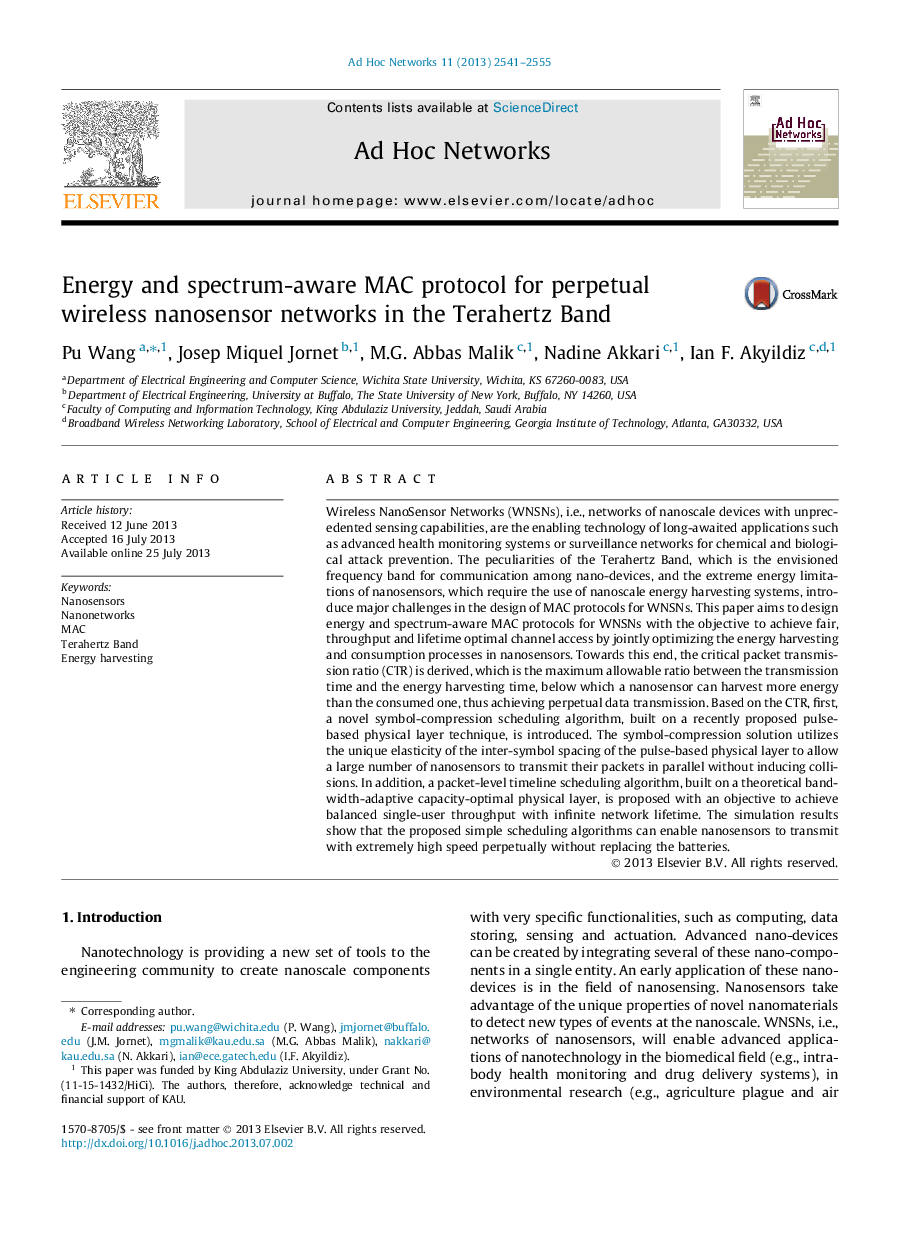| Article ID | Journal | Published Year | Pages | File Type |
|---|---|---|---|---|
| 445497 | Ad Hoc Networks | 2013 | 15 Pages |
Wireless NanoSensor Networks (WNSNs), i.e., networks of nanoscale devices with unprecedented sensing capabilities, are the enabling technology of long-awaited applications such as advanced health monitoring systems or surveillance networks for chemical and biological attack prevention. The peculiarities of the Terahertz Band, which is the envisioned frequency band for communication among nano-devices, and the extreme energy limitations of nanosensors, which require the use of nanoscale energy harvesting systems, introduce major challenges in the design of MAC protocols for WNSNs. This paper aims to design energy and spectrum-aware MAC protocols for WNSNs with the objective to achieve fair, throughput and lifetime optimal channel access by jointly optimizing the energy harvesting and consumption processes in nanosensors. Towards this end, the critical packet transmission ratio (CTR) is derived, which is the maximum allowable ratio between the transmission time and the energy harvesting time, below which a nanosensor can harvest more energy than the consumed one, thus achieving perpetual data transmission. Based on the CTR, first, a novel symbol-compression scheduling algorithm, built on a recently proposed pulse-based physical layer technique, is introduced. The symbol-compression solution utilizes the unique elasticity of the inter-symbol spacing of the pulse-based physical layer to allow a large number of nanosensors to transmit their packets in parallel without inducing collisions. In addition, a packet-level timeline scheduling algorithm, built on a theoretical bandwidth-adaptive capacity-optimal physical layer, is proposed with an objective to achieve balanced single-user throughput with infinite network lifetime. The simulation results show that the proposed simple scheduling algorithms can enable nanosensors to transmit with extremely high speed perpetually without replacing the batteries.
